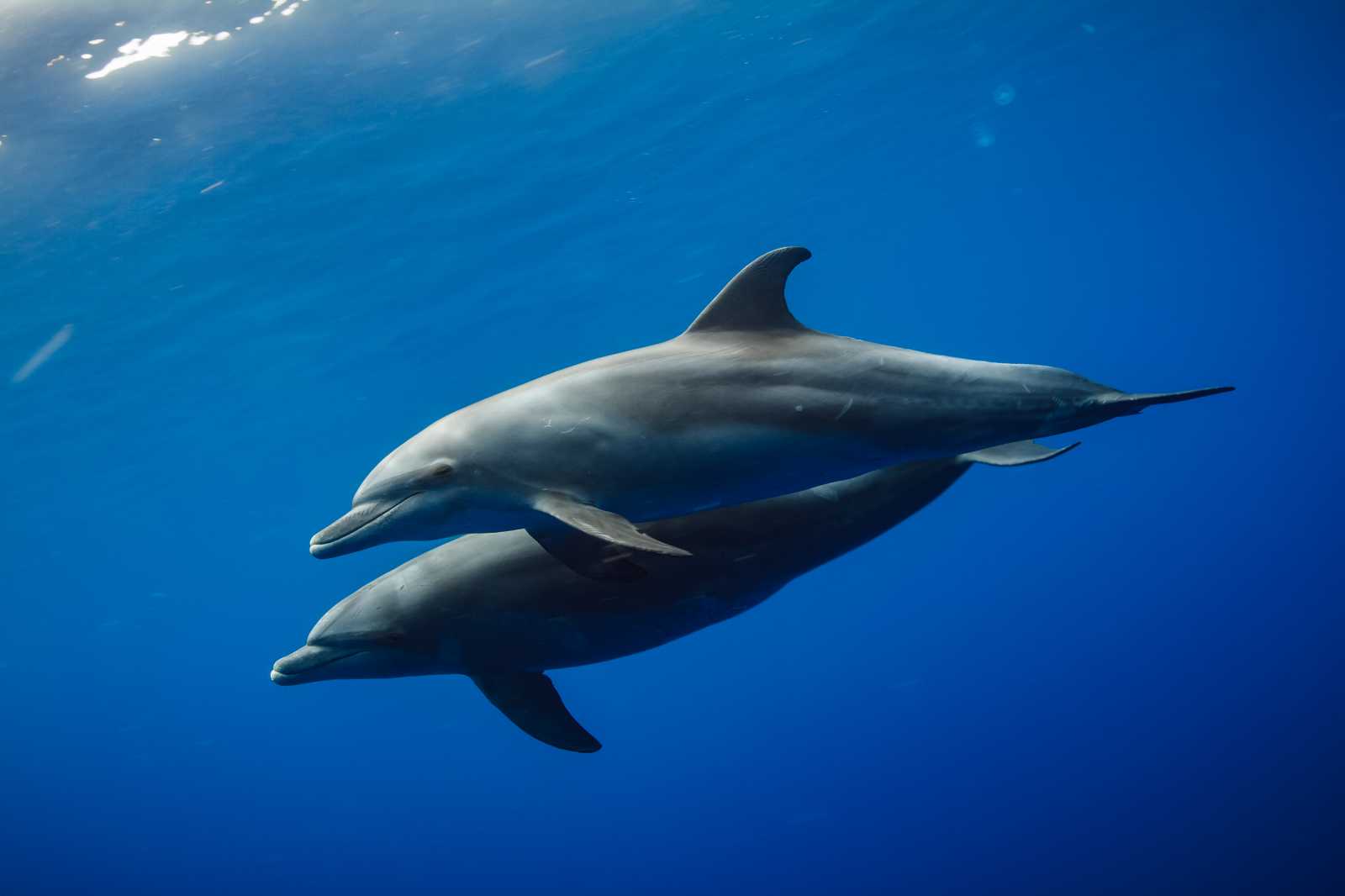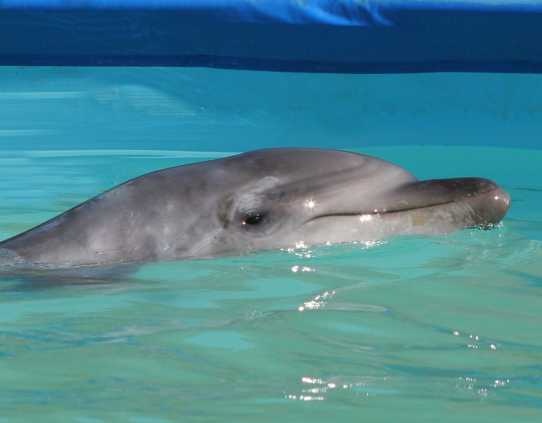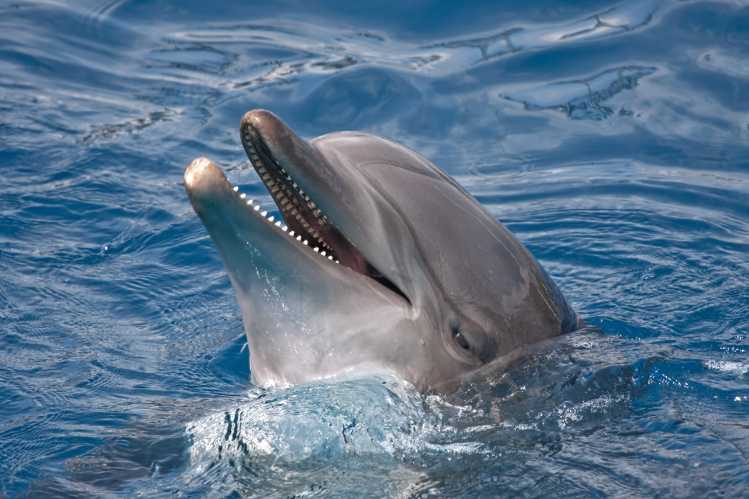
Common Bottlenose Dolphin
Tursiops truncatus
Learn More About Bottlenose Dolphins
Bottlenose dolphins are arguably the most recognized small cetaceans, but can be hard to distinguish from other wild dolphins. These animals are counter-shaded: blackish, slate, gray, brown or bluish on top, and lighter on the sides; and whitish or paler pinkish gray underneath. Sometimes there are spots on the belly and a stripe between the eye and the flipper.
Bottlenose dolphins have short beaks, a non-marked melon, a single blowhole and a moderately hooked dorsal fin. They have 18 to 26 conical teeth in each jaw. Their brains are extremely coiled -- so much so that if it were to be spread out flat, the surface area would be greater than that of a human cortex.
Males are a bit longer and more massive than females. Males mature at about 9 to 15 years old and can live as long as 40 to 45 years. Females mature at about 5 to 12 years old and may live longer than 50 years. The average life span for both males and females is around 20 years.
What do they sound like?
Meet One of Our Patients: Baker D
Bottlenose dolphin Baker D was underweight, suffering from dehydration and had a puncture wound on his snout when he was rescued in San Francisco in 2004. Estimated to be just 3 to 4 years old, Baker D didn’t have the strength to swim on his own when he was transported to a rehabilitation pool at the Center’s hospital so he was put into a floating support sling to prevent him from drowning.
After weeks of round-the-clock care, including antibiotics and medications to help stabilize his heart, Baker D regained his health and was able to swim on his own. He was released with a satellite tag in Monterey Bay but quickly traveled south to join a pod of dolphins near the Channel Islands.

The greatest threats to marine mammals are caused by people, but we can also be their greatest champions.
Sign up for email from The Marine Mammal Center to stay updated on how you can be an advocate and champion for marine mammals like bottlenose dolphins.
Habitat & Population Status
The common bottlenose dolphin swims in all of the world's tropical and temperate seas. Some populations are strictly local; others migrate extensively. There are offshore and inshore populations as well. In California, coastal common bottlenose dolphins stay close to shore between Cabo San Lucas, Mexico, and just north of San Francisco, California.
The California common bottlenose dolphin coastal population is estimated to be a mere 323 dolphins. The offshore bottlenose population within 300 miles of the west coast of North America may be more than 3,000. To the south of the Mexican border, surveys have yielded an overall estimate of 336,000 dolphins.

Breeding & Behavior
In the water, common bottlenose dolphins make an incredible array of squeaks, grunts, grinds and whines. These sounds fall into three categories: whistles, echolocation clicks and pulse sounds. Additionally, dolphins communicate non-vocally through touch.
Common bottlenose dolphins, like most dolphins, are highly social. They form many kinds of social groups: mother-calf pairs, bands of mothers and large societies. Common bottlenose dolphins never fall completely asleep because their breathing is under voluntary control.
When not resting, dolphins are among the fastest swimmers of all marine mammals, achieving bursts of speed up to 22 mph. Common bottlenose dolphins eat a variety of fish as well as crabs, squid, shrimp and similar prey.
Dolphin births can occur any time of the year, but generally peak in the spring with a secondary peak in the autumn. A newborn dolphin is 3 to 4 feet in length and may weigh 33 to 66 pounds after a gestation of 11 to 12 months. When born, a second dolphin (male or female) may assist in the delivery and continue to associate with the young calf.



















